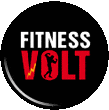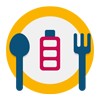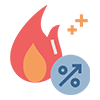The average person will burn 380-500 calories per hour snowboarding or downhill skiing. The average person cross country skiing can burn double the amount of calories burned downhill skiing or snowboarding.
How to Use Skiing Calculator
To use the calculator you must input your weight and the time spent doing the activity in hours and minutes. After that you can find the different physical activities and the calories you will doing them. Here are step-by-step instructions on how to find your estimated calories burned skiing or snowboarding.
- Choose your unit of measurement – metric (kilograms) or imperial (pounds)
- Enter your weight
- Select the specific winter sport activity, add the number of minutes you spent rowing
- Hit Calculate
Now you should see approximately how many calories will be burned skiing or snowboarding.
How The Calculator Works
This calories calculator uses MET (metabolic equivalent) values to determine how many calories skiing and snowboarding burn. The MET formula uses MET values, and calculates the approximate calories burned doing various physical activities. How many calories burned will not be dependent on factors such as age, sex, muscle mass, or other extraneous factors that affect estimated calories burned.
MET
A MET value or metabolic equivalent is a number that rates the calorie expenditure of various physical activities. A MET value is the ratio between your active metabolic rate to your resting metabolic rate.
Your active metabolic rate (AMR) measures the calories you burn when you are active throughout the day, and your resting metabolic rate (RMR), also called your basal metabolic rate (BMR) measure the calories you burn when you are at rest and your body is not actively digesting.
Level Up Your Fitness: Join our 💪 strong community in Fitness Volt Newsletter. Get daily inspiration, expert-backed workouts, nutrition tips, the latest in strength sports, and the support you need to reach your goals. Subscribe for free!
An activity with a MET of 1 burns as many calories as your RMR. An activity with a MET of 4 burns 4 times as many calories as your RMR, or expends 4 times as much energy as an activity with a MET of 1.
Formula
Total Calories burned in 1 minute = (3.5 x MET x body weight in kg)/200
Examples
Someone weighing 140-pounds will burn 354 calories snowboarding downhill with moderate effort and 468 calories skiing in general per hour.
- Calories burned (per minute) = (body weight in kg x MET x 3.5) / 200
This is how the formula to calculate the approximate calories a 140-pounds person will burn snowboarding or skiing look like.
- (63.5029kg x 5.3 x 3.5) / 200 = 5.889893975 Calories burned per minute
- (63.5029kg x 7 x 3.5) / 200 = 7.77910525 Calories burned per minute
To calculate how many calories you burn in one hour of skiing or snowboarding, you need to multiply the calories burned per minute by 60 minutes.
- Calories per hour burned: 5.9 x 60 = 354
- Calories per hour burned = 7.8 x 60 = 468
Results
So, 354 calories are burned per hour snowboarding downhill with moderate effort, and 468 calories are burned per hour skiing in general per hour.
A 140-pound person will also burn 5.9 calories per minute snowboarding, and 7.8 calories per minute skiing.
What is Skiing?
Skiing consists of using skis to glide on snow. It is a recreational sport, and a competitive winter sport, since it needs snow in order to be done. It is also used as basic transportation in the winter months in some areas.
The different types of Skiing are Alpine skiing, Nordic skiing, and Telemark skiing.
Alpine Skiing
Alpine skiing is also called downhill skiing and involves skiing on a piste at a ski resort. Ski lifts are used to bring the skiers up the slope, or even helicopters, snowmobiles, or snowcats are used to reach the top.
Level Up Your Fitness: Join our 💪 strong community in Fitness Volt Newsletter. Get daily inspiration, expert-backed workouts, nutrition tips, the latest in strength sports, and the support you need to reach your goals. Subscribe for free!
Alpine skiing branched out from Nordic skiing. This is because the boot types used are similar and used for the same purpose.
Nordic Skiing
Nordic skiing includes ski jumping and cross-country skiing because they both use bindings that attach at the toes of the boots, and not at the heels. This certain style of skier’s boots is what separates the skiing styles from one another.
Nordic ski jumping is only practiced in areas reserved for ski jumping.
Telemark Skiing
Telemark skiing is a technique for turning and is named after the Telemark region of Norway. Telemark skiing uses equipment similar to Nordic skiing, to give the skier an advantage throughout using the turning technique.
Equipment
Skis are 2 thin skateboard-shaped boards made of strong material that can have skins applied to them to minimize traction and can go from $400 to $1000 for a new set of skis, and a whole ski setup can go from $600 to $1500.
It might be cheaper to rent skis instead of buying them if you choose to ski for a limited time rather than for practice on a regular basis.
Ski boots and bindings are needed to attach to the skis. Poles are used to propel the skier while they are on the snow to reach high speeds and to keep balance.
Other than the equipment used to actually ski, equipment like ski suits, ski goggles, and ski gloves and helmets are used to protect the skier from the harsh climates of the winter months.
Does Skiing Burn a Lot of Calories?
Skiing is great at burning calories, even when done with light effort it can burn as many calories as jogging can. Skiing burns more calories than average cardio does for many reasons.
Because skiing and snowboarding are winter activities, they are only done in the winter. Doing cardio in the cold burns more calories and fat, since brown fat is more likely to be burned specifically when it is cold.
Skiing uses a lot of major muscle groups like the chest and back, legs and core muscles, and the shoulders to a great degree. It is a complete upper body workout and uses your leg muscles just as much.
You first must climb the hill that you plan on skiing. You can do uphill skiing to burn more calories. Then downhill skiing will burn close to 450-550 calories an hour. This is enough to cause significant weight loss without dieting if done every single day. The calories you burn daily have to equal 500 calories to burn 2 pounds a week of body fat.
This is not as much as competitive cross country skiing can burn. Not only is cross country skiing good exercise, but an elite skier can also burn more than 1000 calories an hour doing this. Elite racers use vigorous effort when cross country skiing, and they will burn the most calories because of the effort they put in the effort of an elite skier and go faster than a moderate speed, you could burn many more calories than if you were to use light effort.
Here’s a chart that the calculator uses to determine METs based on Skiing activity.
| Type of Activity | MET | Calories Burned |
|---|---|---|
| Downhill, alpine or snowboarding light effort (active time only) | 4.3 | 308 |
| Downhill, alpine or snowboarding, moderate effort, general (active time only) |
5.3 | 379 |
| Snow shoeing, moderate effort | 5.3 | 379 |
| Cross country, 2.5 mph, slow or light effort | 6.8 | 487 |
| Skiing, general | 7 | 501 |
| Ski jumping (climb up carrying skis) | 7 | 501 |
| Sledding, tobaggagining, bobsleding, luge | 7 | 501 |
| Downhill, vigorous effort, racing | 8 | 573 |
| Cross country, 4.0 – 4.9 mph, moderate speed and effort | 9 | 644 |
| Snow shoeing, vigorous effort | 10 | 716 |
| Cross country, 5.0 – 7.9 mph, brisk speed, vigorous effort | 12.5 | 895 |
| Skiing, roller, elite racers | 12.5 | 895 |
| Cross country, skating | 13.3 | 952 |
| Cross country, biatholon, skating technique | 13.5 | 966 |
| Cross country, > 8.0 mph, elite skier, racing | 15 | 1074 |
| Cross country, hard snow, uphill, maximum, snow mountaineering | 15.5 | 1110 |
Conclusion
Skiing is a great sport to have fun and burn many calories in the winter. Unlike ice skating, skiing and snowboarding can only be done in the winter months outside. You can go to ski resorts to use ski slopes and rent equipment to snowboard and ski downhill. It is a very popular recreational sport that has many styles and ways of skiing. Snowboarding is similar but with similarity to tricks sports like BMX and skateboarding. The average person will burn 380-500 calories per hour snowboarding or downhill skiing.
You can lose weight steadily with the calories burned from these winter activities, as long as you are consistent with your diet, eat 500 fewer calories daily, or burn 500 more calories daily. This will put you in a caloric deficit, and cause you to lose 2 pounds a week. You can uphold this progress by tracking the calories you burn and the calories you eat.
Calculators like this one are useful in keeping yourself accountable and tracking your progress. They are easy to use and will keep you a step ahead of the game when it comes to your fitness or weight loss journey.
References:
- What is skiing: https://en.wikipedia.org/wiki/Skiing
- Jetté, M.; Sidney, K.; Blümchen, G. (1990-08). Metabolic equivalents (METS) in exercise testing, exercise prescription, and evaluation of functional capacity. Clinical Cardiology. 13 (8): 555–565. doi:10.1002/clc.4960130809.
- Ainsworth BE, Haskell WL, Herrmann SD, Meckes N, Bassett Jr DR, Tudor-Locke C, Greer JL, Vezina J, Whitt-Glover MC, Leon AS. The Compendium of Physical Activities Tracking Guide. Healthy Lifestyles Research Center, College of Nursing & Health Innovation, Arizona State University.
- Recommendations on physical activity for health from the Harvard School of Public Health and WHO global recommendations on physical activity for health (updated): https://www.who.int

